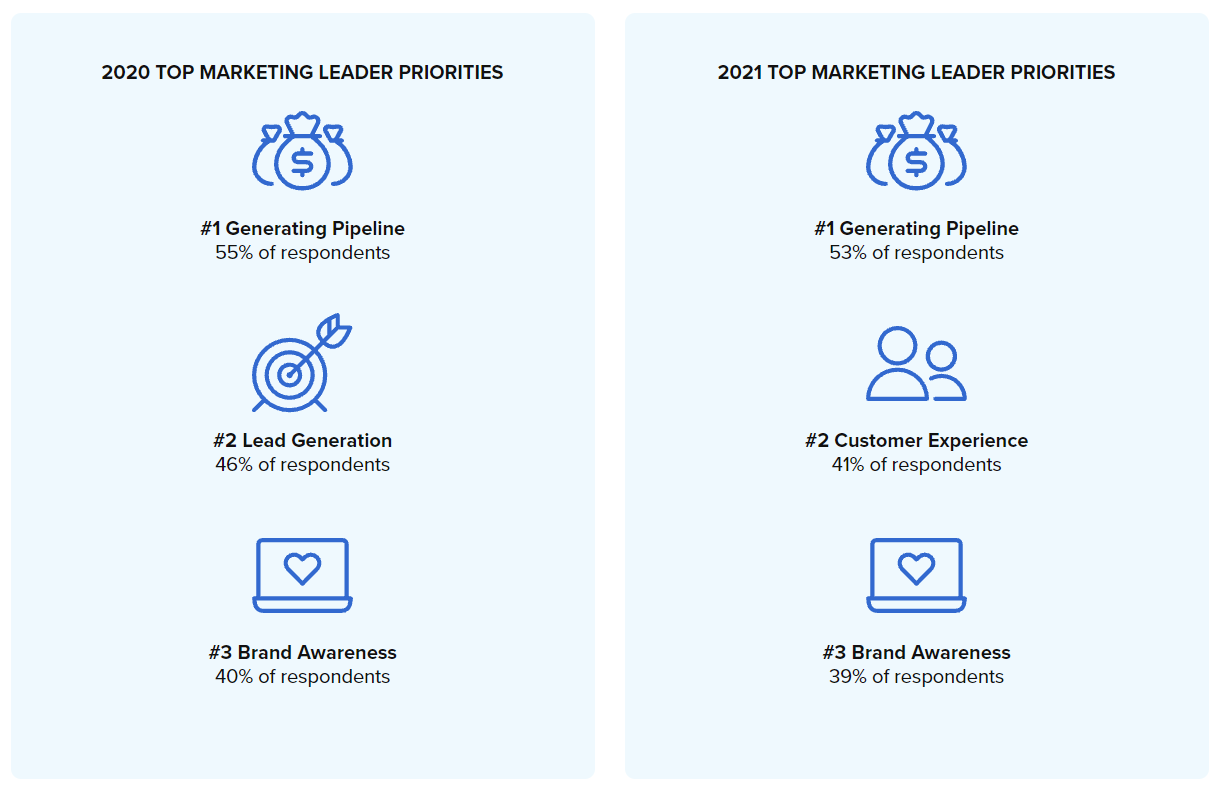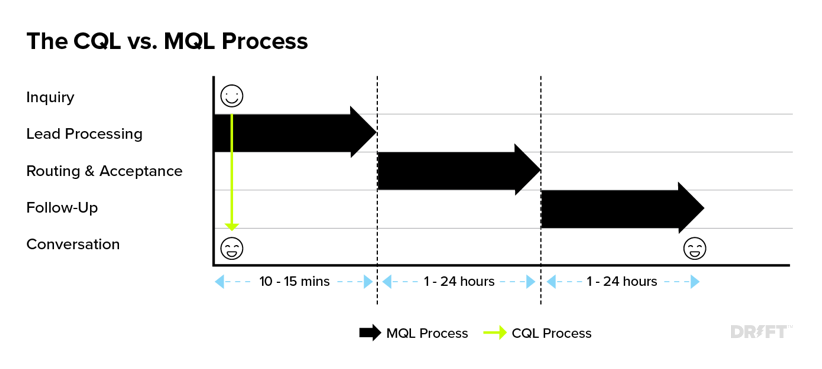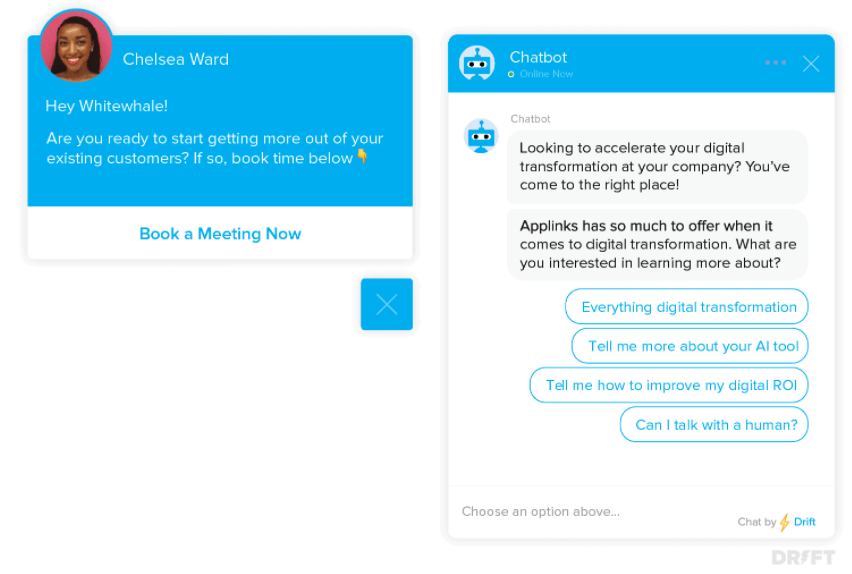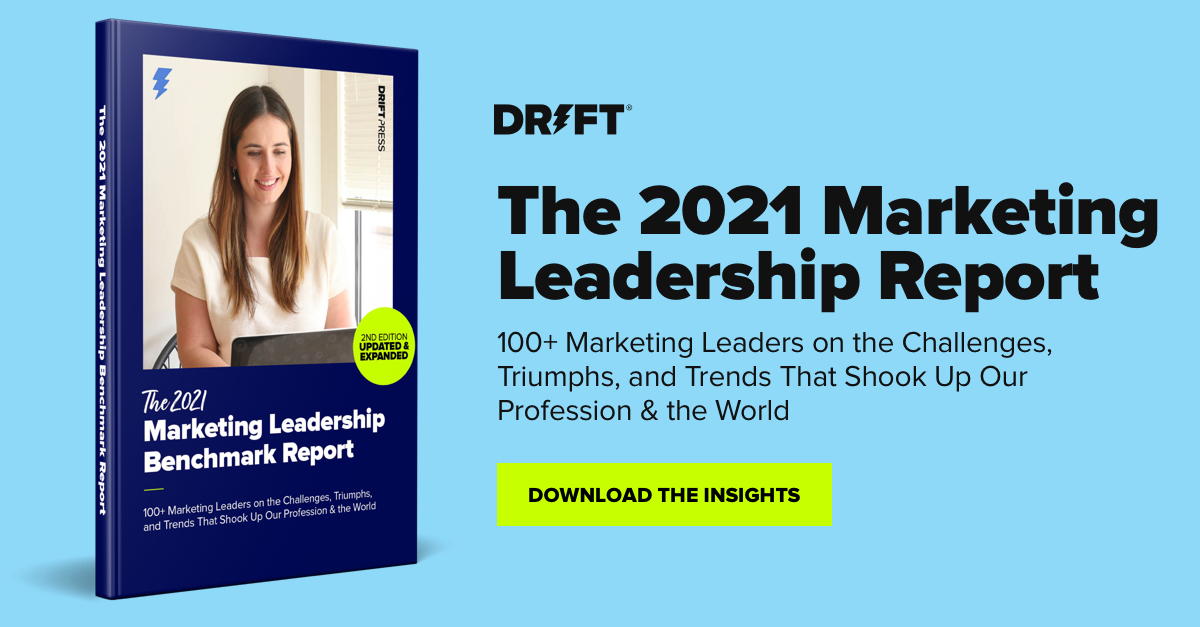If the COVID-19 pandemic has taught us anything, it’s that marketers need to be braced for change. In 2021, 74% of marketing leaders stated that marketing has become more important since the pandemic started.
Now, with more eyes on marketing, we marketers are having to juggle multiple initiatives all at once. But we just don’t have the power to get everything done.
It’s up to us to figure out what is actually worth our time and effort.
For marketers, spending time wisely means knowing what initiatives to prioritize. Though that can be a hard nut to crack when the marketing landscape is constantly shifting.
So, we asked over 100 marketing leaders to tell us their top priorities in 2021. While we found that some priorities remain the same, more and more marketers agree that their work doesn’t stop at acquiring customers.
Here’s a breakdown of marketing’s top priorities and how you can invest in them today.
What Are the Top 3 Priorities for Marketing Leaders?
Our 2021 Marketing Leadership Benchmark Report surveyed marketing leaders, ranging from C-suite executives to managers, from across 25 industries. These are the top three priorities they agreed upon:

1. Generating Pipeline
What’s marketing’s absolute top priority? 53% of marketing leaders agreed that it’s generating pipeline. And that’s not surprising. After all, the success of your marketing strategy depends on the number of qualified leads and the quality of opportunities you’re handing over to sales.
Psst! This is exactly why we created Pipeline — a brand new podcast where CROs, CMOs, and other B2B sales and marketing leaders share how they’re building pipeline for their businesses. No fluff — just tactics that work. Listen here 🎧
2. Customer Experience
Here’s something a little more unexpected: According to 41% of marketing leaders, the second biggest priority is customer experience. Over the past 20 months, budget cuts related to COVID-19 caused many businesses to reexamine their expenses. It makes sense then that, in 2021, marketers turned their attention to the customer experience to increase retention.
3. Brand Awareness
Finally, in third place, brand awareness — with 39% of marketing leaders listing it as a top priority. With all of the competition you’re facing, brand awareness is the best way to stand out from the crowd. The more positive interactions people have with your brand, the more you’re viewed as a category leader. And that awareness is key to creating pipeline.
Why Has Focus Shifted to Customer Experience?
When we surveyed marketing leaders in 2020, their first and third priorities were the same — generating pipeline and building brand awareness.
But what has changed in 2021 is the number two priority. Marketing leaders have shifted focus from lead generation to customer experience. Why?
One reason might be that marketers are spending more time generating pipeline instead of generating leads.

At Drift, we strongly believe that the marketing qualified lead (MQL) is dead. MQLs are notorious for causing friction between sales and marketing, slowing down response times, and making campaigns seem more successful than they really are.
To generate pipeline, marketers are now turning their eyes to sales qualified leads (SQLs) and conversation qualified leads (CQLs). So, it’s possible that marketing leaders no longer felt that lead generation was one of their top priorities.
Another reason might be that marketers have a greater understanding of how customer experiences contribute to revenue growth.
COVID made it clear that business priorities can quickly transform — and your customer today may not be your customer tomorrow. Today’s marketers know that we have to continue to sell to our customers by staying relevant and responding to changing customer needs.
Retention-guided marketing doesn’t just give your customers the content they need to solve their current problems. It also positions your company as a trusted source.
For example, we’ve run several workshops for current customers of Drift to showcase product features and demonstrate how customers can make the most use of our product. We also published what we are calling The Go-to-Market Guide to Drift — a resource that is packed with Drift best practices for marketing, sales, customer experience, and operations teams.
How to Invest in These Top Marketing Priorities
Now that you’ve got your priorities straight, what can you do to deliver?
There are a lot of tactics that you can adopt to generate pipeline, improve customer experience, and create brand awareness. But what I want to leave you with is three areas of investment so that you can excel at these goals in the long run.
Know That Your Team Is Everything
When asked about their biggest challenges in marketing today, 60% of marketing leaders talked about the lack of talent bandwidth. With all the changes that happen in the marketing world, your team is going to be your greatest asset.
In open-ended responses, many marketing leaders agreed that it’s important to have the right team.
If your organization is talent deficient on either the sales or marketing side, it doesn’t matter if you have the proper technology or strategy. You will struggle to reach your goals.
Increasingly, marketers are bringing in AI and personalization tech to provide better experiences for buyers. But without a talented team, you won’t be able to make the most of the technology you have. As one marketing leader put it:
I think people are our most valuable asset — the technology, the media dollars, the messaging, etc. all need the right people to make them work. Prioritize attracting hiring, training, and mentoring the best possible talent you can and as a leader, make this your #1 focus all the time. Through them, you will be successful.
The best leaders hire the right people, support them as much as possible, and then get out of their way. In practice, this means establishing a company culture of trust and making sure the right key performance indicators (KPIs) are being tracked. And marketing leaders can make sure that their own stress and desire to succeed doesn’t become an excuse to micromanage.
Balance Creative Work and Operations Work
For the team at Drift, marketing is both an art and a science.
Here, we encourage everyone to regularly crunch the numbers and measure their impact on pipeline. It’s important that all marketers keep an eye on their metrics so that they can track their contribution to ROI (return on investment) and set reasonable goals.
At the same time, obsessing over systems, integrations, and data can be counter-productive. (Trust me, I’ve seen it.) Marketing teams that do so risk offering stale experiences, boring messaging, and branding that gets lost in the crowd. You have to give your creative work the focus that it deserves — even if its impact is harder to measure.
Keep in mind that creativity isn’t exclusive to your copywriters and designers. Everyone has creative intelligence and cultivating it will help your marketers become more thoughtful and strategic workers.
To run a great marketing team, you need to give equal time and energy to your creative work and operations work. That way, you’re paying attention to both the things you can’t measure and the things you can.
Keep Aligning Marketing with Sales
Your marketing team and sales team should already be aligned. But there’s always more you can do.
One of the best ways to up your marketing and sales alignment is to implement an account-based marketing (ABM) strategy. This is because ABM requires a close partnership between the two teams as they decide which accounts to target and how.
To optimize your ABM strategy, you can start by making sure that marketing and sales are on the same page about your definition of a SQL. From there, your teams can personalize the buying experience based on account behavior, whether that’s with website content, emails, or chatbots.

You can also bring more channels into play for your ABM strategy, such as direct mail, virtual events, and invitation-only fireside chats. By targeting accounts across multiple channels, your company becomes impossible to ignore (in a good way).
The best part? You’re putting your marketing and sales teams in sync with one another, all throughout the campaign process.
Stay Up to Date on Your Marketing Strategy
It’s exciting to see that pipeline generation has been the top priority for marketing leaders, two years in a row.
Clearly, marketers know exactly how valuable their work is for generating revenue. And with customer experience joining the top three priorities, you can expect to see more marketers putting their spin on onboarding and retention.
Just remember: invest in your team, balance your creativity with your operations, and keep marketing and sales aligned. That’s how you’ll be able to stay on top of all your marketing initiatives, even as the state of marketing continues to change.










